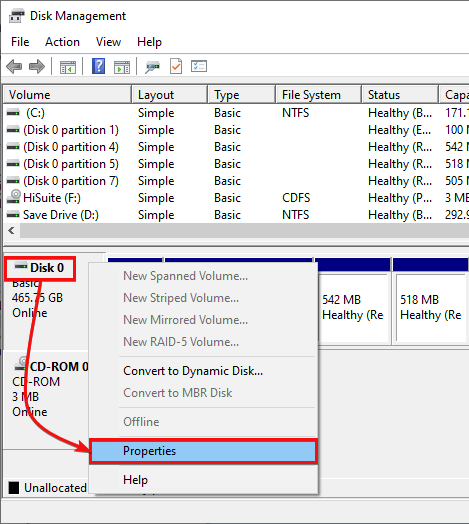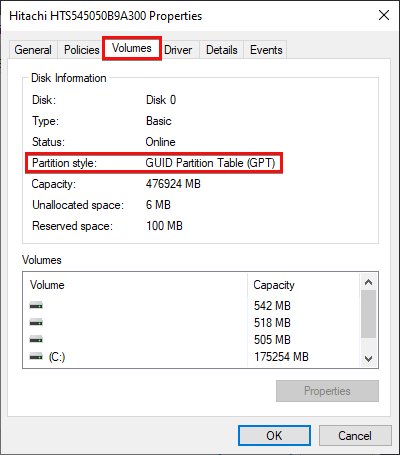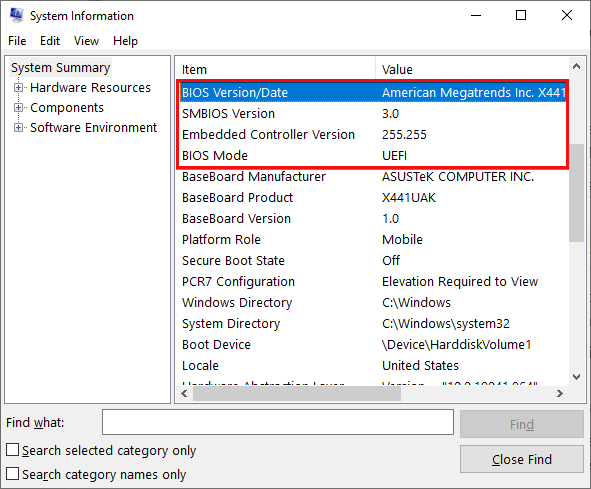If you’ve ever partitioned and formatted a drive, you’ve certainly dealt with the MBR or GPT? file systems. But what exactly are these file systems? How are these file systems important?
MBR and GPT file systems are responsible for partitioning data on your storage device. And throughout this article, you’ll learn the difference between MBR and GPT and when to choose one over the other.
Let’s get started!
Prerequisites
If you intend to follow the demos in this article, be sure you have a Windows PC. This tutorial uses Windows 10, but any modern Windows version will work. Disk partitioning is an OS-agnostic topic, but this tutorial will demonstrate various tasks in Windows.
What is disk partitioning, and how do MBR and GPT fit in?
Data on a disk must be allocated into different “chunks” called disk partitions. How these disk partitions are created and organize data is defined in a partition table. Partition tables are 64-byte data structures that describe how each partition on the disk and the data inside that partition are organized.
The computer needs a way to read these partition tables. It needs to know where partition to use to boot up the computer and interpret the partitions. This understanding is performed via the MBR and GPT filesystems.
Stored on the boot sector of a disk drive, MBR and GPT are small programs that tell the computer what partition to use to boot (boot partition) and how the OS should interpret the partition table.
Understanding Primary, Logical and Extended Partitions
As you learned in the previous section, each partition contains various partitions, but not every partition is alike. The primary purpose of partitions is to store data in some manner.
There are three different kinds of disk partitions your computer can have:
- Primary or system partitions – These partitions are known as “active” partitions that store the operating system and define the partition to boot from. Primary partitions are typically designated a drive letter like C: or in Linux, a single forward slash.
- Extended partitions – This partition type is only available on MBR partitions; this type is essentially a container for logical partitions. You cannot directly mount extended partitions meaning they cannot have a drive letter (Windows) or be directly accessible in other operating systems.
- Logical partitions – These partitions are created inside of extended partitions and contain various data. Although you can install an operating system on a logical drive, you cannot mark it as “Active” and boot your computer from one. These partitions, like primary partitions, are mounted and available in the operating system.
MBR Partition Scheme
Being the first disk-partitioning scheme, MBR was the pioneer in the space. The MBR is located in the hard drive’s first sector and is created as soon as the disk’s first partition is created.
The MBR’s prime responsibilities are identifying the active or boot volume and associates partitions and volumes with a particular drive and are controlled by the Basic Input/Output System (BIOS).
The MBR consists of four components:
- The 64-byte partition table with a maximum of four primary partitions or three primary and an extended partition, each taking up 16 bytes each. An MBR partition table only holds information about primary and extended partitions. Logical partitions get past the four-partition limit.

- A 64-byte chunk of OS-independent code – This small piece of code is initially executed at boot time. It is responsible for reading the partition table and determining the partition marked as active (or bootable).
- The signature of the disk – A four-byte identifier that is exclusive to the hard disk and must be unique for each drive attached to the computer system.
- The MBR signature – Often called the magical number, the MBR signature is set at byte position 0xAA55 on the drive, indicating a valid MBR.
Limitations of the MBR Partition Scheme
Being the predecessor to GPT, you’re going to find a few limitations when it comes to MBR. For example, MBR only supports four disk partitions. Logical partitions get around this limitation but may impact performance with extremely time-sensitive workloads.
Also, an MBR partition has a maximum size of 2TB and cannot be created from disk space greater than 2TB. MBR will not work if you need to store more than 2TB of data on a partition.
GPT Partition Table (GPT) Scheme
Although GPT and MBR are in the same partitioning styles, they approach the issue much differently. The successor to MBR is the GPT partitioning scheme. GPT’s main difference with MBR is the way it identities disks. Unlike MBR, GPT addresses each partition with a GUID. Note that if you would like your computer system to boot from a GPT drive, your computer should have UEFI. GPT also has many different advantages of MBR, such as:
- 128 maximum partitions
- Much larger partition sizes (up to 9.4ZB)
- Disk integrity protection using a backup partition table used to hold backup information for the GPT header and partition table in the event of a loss or damage to the disk’s primary partition.
- Runs on Unified Extensible Firmware Interface (UEFI) instead of the legacy BIOS.
- Discrete driver support through the UEFI.
UEFI makes use of complex but distinct drivers, while BIOS makes use of drivers stored on ROM (read-only memory). Updating the BIOS on the hardware requires re-tuning the ROMs for dependability. Note that the UEFI drivers are published separately, which makes upgrading easy.
Limitations of the GPT Partition Scheme
From what you learned about GPT so far, it would seem that GPT is a perfect partitioning scheme. Well, almost. GPT has its fair share of limitations as MBR does.
For example, the Windows operating system only has a maximum limit of 128 partitions. Additionally, tools such as gdisk and parted have their own set of limitations as well.
The primary disadvantage of UEFI is its lack of device and software support. Both hardware and operating system must be compatible to work correctly. Although the latest versions of Windows and macOS are completely compatible and functional, older operating systems such as Windows XP are not.
Protective MBR
UEFI is not supported on all computer systems, i.e., if you’re to use UEFI on a computer or a device, it must have support for UEFI. Another constraint to using UEFI is that your computer system should have a GPT disk to work with UEFI. Thanks to protective MBR, you can work with MBR disks with UEFI.
Notably, all GUID Partition Table discs include a Protective MBR for compatibility with older applications that do not recognize the GUID Partition Table disk format. A GPT disk appears as a single partition on a device that only supports MBR. This prevents the device from overwriting hard drive data.
Checking the Partitioning Style of Your Disk Partitions
Now that you’ve learned a little about partitions and partitioning styles, let’s now get your hands dirty and dig into a demo!
Let’s learn how to check the partition style of a disk in Windows via the graphical Disk Management application and via the command line using the diskpart utility.
Verifying Partition Style via Disk Management Utility
Try the Disk Management tool if you prefer to verify your disk’s partition scheme in a GUI. The Disk Management utility is a handy tool to manage all disks within Windows.
1. Right click on the Start menu and select Disk Management from the context menu to open the Disk Management utility. The utility will open, displaying all of the partitions Windows sees on your disks.

2. Click on any volume (mounted partition), right-click on the disk, and click Properties from the context menu.

3. Click on the Volumes tab. In this tab, you’ll see the Partition style of that particular disk.

Verifying Partition Style via the Diskpart Command-Line Utility
If you prefer a command-line way of discovering the same information as the Disk Management tool, the diskpart utility is your best bet in Windows.
1. Open PowerShell or a command prompt as administrator.
2. Run the diskpart command with no parameters, as shown below. Invoke diskpart with no parameters drops you into an interactive shell allowing you to read and change disk partitions on your system.
When you run diskpart, your prompt will change to DISKPART> indicating you are in the Diskpart utility shell.
diskpart3. Now, run the command below to list each disk available in your system. This command will return common information like disk label, status, size, etc. It will also return a Gpt column with an asterisk if it’s a GPT-partitioned disk.
list diskBelow you’ll see the disk’s (Disk 0) partitioning style is GPT.

Verifying your Computer’s BIOS or UEFI System
This article has mentioned BIOS and UEFI a few times. Let’s now jump into a quick demo to show you how to determine if your computer has a BIOS or UEFI.
Click on your Start menu and type msinfo32. This action brings up the Windows System Information utility. This utility is a great way to get an overview of your computer hardware.

On the System Summary screen, check out the BIOS Mode field. In this field, you’ll discover if your PC has a UEFI or BIOS. In the screenshot below, this PC has a UEFI.

MBR or GPT: Which to Choose?
To summarize, let’s now compare these two partition schemes back to back. As you’ve read, both MBR and GPT approach disk-partitioning in a different way, but does that mean one is better than the other? That’s up for debate.
GPT is the successor to MBR and has many advantages over MBR, making it seem like the clear winner. But we all know there are many niche cases out there that may warrant MBR over GPT.
| Feature | Master Boot Record (MBR) | GUID Partition Table (GPT) |
| Maximum number of primary partitions supported | 4 | Limited only by the operating system. The limit is 128 in Windows. |
| Operating System Support | Windows 95+ | Windows 8+ |
| Partition Table Recovery Options | None | Boot and partition data stored spread across the disk for recovery purposes. |
| Data Integrity Controls | None | Cyclic Redundancy Check (CRCs) |
| Maximum partition size | 2TB | 9.4 ZB |
| Supported Bootable Operating Systems | 1 | 1+ |
| Partition ID Information | Stored in the partition table | Stored in each partition |
| Firmware Interface Support | BIOS | UEFI |
Conclusion
Throughout this article, you’ve learned about disk partitioning and how both MBR and GPT handle this task. You’ve seen that each scheme “works,” but GPT has addressed many of the shortcomings of MBR.
Now the question is, the next time you set up a disk, which partition scheme would you tun to?



